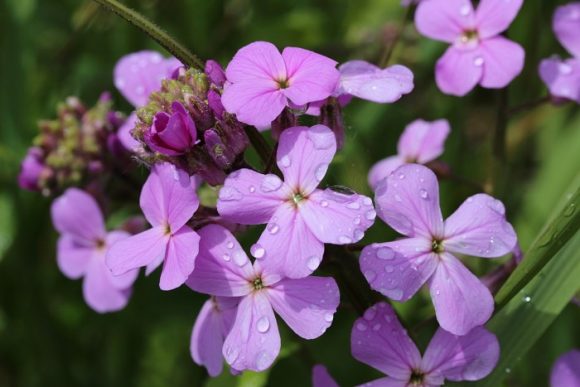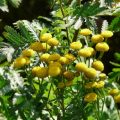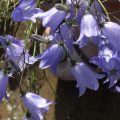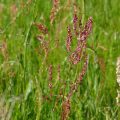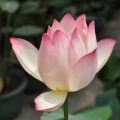- The Miraculous Shiny Bush Plant - January 18, 2021
- Colorful, Edible and Medicinal Celosia - January 10, 2021
- Radish, a Nutritional Power House - December 19, 2020
Dame’s rocket or hesperis matronalis is an annual, biennial and at times a perennial, erect plant that reaches up to 4 feet tall and 18 inches wide. It is a member of the Brassicaceae or Cruciferae family which makes it a close relative of savoy cabbage, mustard, kale, broccoli, and red cabbage. Dame’s rocket is a native of Italy but is now found in many parts of Russia, Asia, the Mediterranean region and the US.
[Note: The Right Flowers is not a medical site. Knowledge of and information about the therapeutic benefits and applications of flowers, while known through the ages, does not constitute medical advice. If you are having health issues, you should consult with a physician.]
This member of the mustard family produces a cluster of hairy, alternate leaves during the first year in early spring or late summer by sending up branched, spiky stalks with 4-petaled, loose, white or lavender-pink flowers. At a glance, most people mistake it for phlox. However, unlike the dame, phlox has 5-petaled flowers.
Dame’s rocket is normally cultivated for its showy, long-lasting flowers and their sweet fragrance. In addition, the plant requires minimal care and is considered a trouble-free herb. Its many names, including mother-of-the-evening, damask violet, sweet rocket, rogue’s gillyflower, and vesper flower, allude to its sweet scent and the many centuries of cultivation in gardens. In addition, these names are a clear indicator of the high regard in which it has been held.
This flowering plant arrived in America as a garden flower and was widely cultivated before it escaped to grow in the wild in fields, along roadsides and waste areas. Though it is now considered a wildflower, some people regard it as an invasive weed due to its ability to self-seed and propagate.
Currently, some states such as Wisconsin, Connecticut, Massachusetts, and Colorado have banned damask violet due to its invasive nature. Four centuries ago, banning this flowering plant would probably have led to statewide demonstrations as the worth of this plant was not in question. At that time, dame’s rocket was the greatest addition to every Baroque garden and every high society family with a reputation to protect had one. A Baroque garden was for show and members of the high society gathered there to admire the garden’s design. The garden was also a subtle form of expressing the owner’s power and affluence.
Dame’s rocket flowers are said to symbolize deceit as they have a nice fragrance in the evening but are scentless during the day. The flowers are known to have properties that stimulate glands. In addition, they have aphrodisiac capabilities. Apart from stimulating glands and having aphrodisiac capabilities, the flowers and leaves of the plant have sudorific and diuretic properties. Since these parts of the flower have high vitamin C content, they are also used to treat scurvy while the essential oil derived from dame’s rocket is used in aromatherapy.
Today, dame’s rocket is no longer sough-after unlike several centuries ago and Baroque gardens are no longer fashionable. However, its flowers are still deceptive as ever and the plant’s medicinal properties are still intact.
